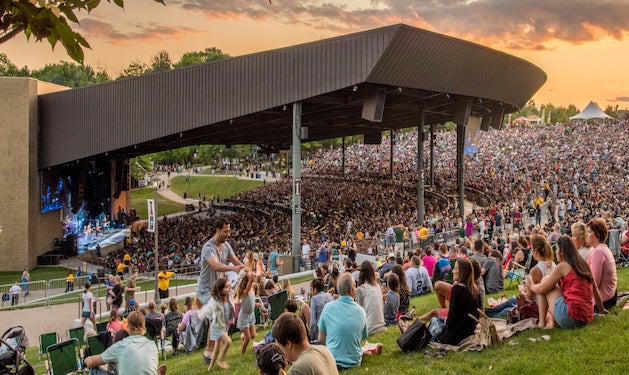BuildFest 2: Peace Rises
September 10-14, 2025
Bethel Woods Art & Architecture Festival
BuildFest 2: Peace Rises saw students and faculty from across the country make the pilgrimage to Bethel Woods, the historic site of the 1969 Woodstock Festival, to participate in an immersive design-build camp. For five days, students and faculty lived and worked on site, camping on the grounds where the counterculture galvanized in 1969.
Information about the theme and call for proposals for BuildFest 2026 will be available here beginning February 2026.
From September 10-14, 2025, installations were constructed out of timber using experimental assembly and fabrication methods. Including Polylith, a stage and seating area fabricated using a six-axis robotic arm in Ithaca, New York, and then assembled impromptu by hand onsite using an intuitive modular system. Trillium, a glowing shade-structure Frankensteined together from reused timber and recycled plastic that refracts and re-colors light through its fanned canopy. And the Peace Pavilion, a communal-confessional etched with lyrics and phrases sung and uttered at Woodstock located on the shore of Filippini Pond where campers bathed in in 1969. (see details of each project listed below)
By day, festival-goers worked together, building communally, and participating in hand-craft and robotics workshops. By night, the campgrounds and installations were activated via spontaneous and planned activities. Including a concert and album release party by experimental rock band Guerilla Toss. Multiple DJ sets, a sound bath, yoga, and a football match.
The 2025 Bethel Woods Art and Architecture Festival is made possible through the generous support of Think Wood, our Premier Sponsor. Major visionary support is provided by Andrew Jacobson, trustee at the Rochester Institute of Technology and Grimm Construction, a family-owned and operated general contractor based in Pennsylvania. Additional support is provided by UNALAM and DeGraw & DeHaan Architects.
2025 Projects
Peace Pavilion
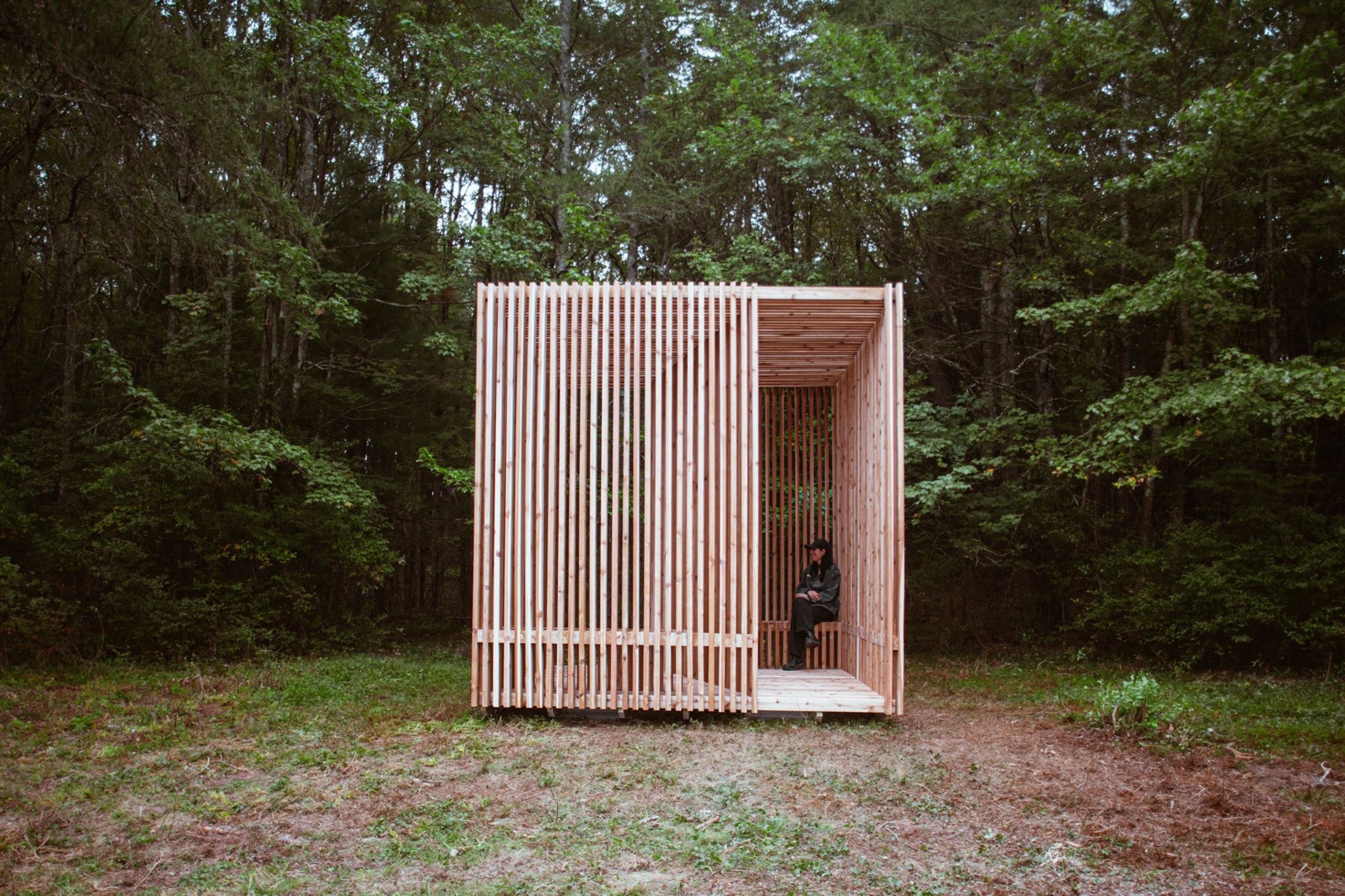
Project Name: Peace Pavilion
Team Leader: Amanda Reis and Eduardo Aquino (AREA)
University Affiliation: Rochester Institute of Technology Architecture (Amanda) & University of Manitoba (Eduardo)
Team Members: Amanda Reis, Eduardo Aquino, Ralph Gutierrez, Noah Baldon, Maddy Bortle, Anna-Leigha Clarke, Ryan Denberg, Sydney Fox, Gabriela Hernandez, Gil Merod, Mackendra Nobes, Julia Resnick, Youngjin Yi, Michael Buffalin, Jim Heaney, and Chris Vorndran.
Project Description: The Peace Pavilion celebrates the spirit of the Woodstock Festival by reimagining our relationship with the concept of “peace.” Based on the Yin and Yang symbol—interconnected opposites forming a harmonious whole—the pavilion comprises two identical spaces divided by a central timber screen, laser-engraved with poetry, quotes, and lyrics from Woodstock, and thus evoking a layered, meditative experience that honors both individuality and togetherness. As visitors enter from either side, they create a quiet moment of reflection and reciprocal awareness. The structure was prefabricated at RIT’s SHED, then shipped and assembled at Bethel Woods using uncut linear lumber in conjunction with a digital fabrication process to produce virtually zero waste.
Nesthavnette
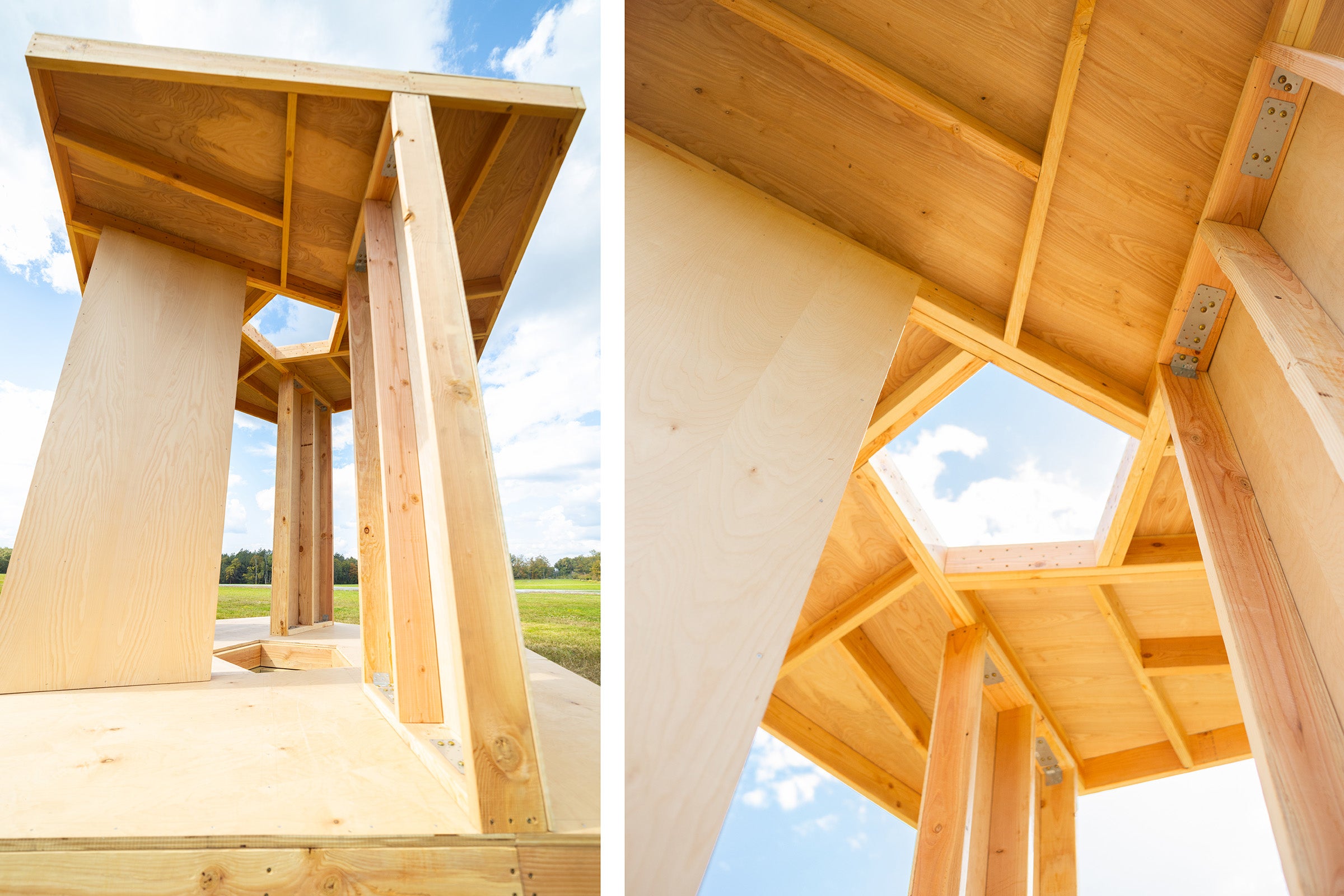
Project Name: Nesthavnette
Team Leader: Dr. Arash Adel (Adel Research Group)
University Affiliation: Princeton University
Team Members: Dr. Salma Mozaffari, Daniel Ruan, Jutang Gao, Namdev Talluru, Roman Ibrahimov, Yiqing Wang, Michael Papagni, Rida Sajjad, Karen Arroyo, Anthony Sorrentino
Project Description: Nesthavnette merges human creativity with robotic fabrication to create a hexagonal, contemplative retreat. Assembled from timber pieces using human-robot collaborative construction (HRCC) techniques, this enclosed, cabin-like installation offers a space for reflection, stillness, and one-on-one dialogue with the landscape. Nesthavnette evokes a sense of abstracted nature—where form, material, and light reinterpret the forest’s presence, guiding visitors into a slowed rhythm of observation and listening. It stands as a meditative landmark shaped by art, technology, and ecology, continuing Woodstock’s legacy of creativity and connection.
Trillium
Project Name: Trillium
Team Leader: Chris Humphrey, Andrew Colopy
University Affiliation: Rice University
Team Members: Alex Pina, Manuella Gbossou, Jim (Jingping) Wu, Shaelyn Parker, Fatima Castro, Grace Andrews, Benjamin Rao, Braden Birko
Project Description: Trillium takes formal and conceptual inspiration from the native Trillium flower, long associated with themes of renewal and transformation. Echoing the flower’s morphology, the pavilion unfolds as a translucent red petal that invites visitors to engage with light, material, and memory—evoking both the ephemeral beauty of nature and the countercultural spirit of Woodstock’s “flower power.” At the core of the project is an investigation of rebirth—not only as metaphor, but as material methodology. Continuing a line of research into computational design of waste-based material assemblies, the pavilion utilizes reclaimed wood and post-industrial plastic. Its structural system employs traditional timber joinery, reinterpreted through modern fabrication to accommodate the irregularities of salvaged stock. Recycled plastic panels are then milled to fit within the grooves of the reclaimed wood siding, forming a translucent envelope that captures and refracts sunlight. The result is a luminous, meditative space—a material expression of rising peace rooted in cycles of reuse and renewal.
Polylith
Project Name: Polylith
Team Leader: Ekin Erar & Lawson Spencer
University Affiliation: Syracuse University (Ekin) & Cornell University (Lawson)
Team Members: Varun Gandhi, Jacob Gibbons, Seh Eun Emily Hong, Austin Johnson, Torben Karl, Yuji Kitamura, Brooke Kenworthy, Amina Lahham, Bo Li, Edozie Onumonu Kobe Phillips, Helen Bennett, Katharine Marr, Saffiyah Subhan-Khan, Clark Dong Project
Description: Polylith reimagines construction as a collective, ritualistic act rather than a finished object. Drawing inspiration from Bill Hanley’s sound scaffolds at Woodstock in 1969, the project combines the logic of scaffolding with a modular, robotically fabricated timber system that is lightweight, mono-material, and easily assembled without hardware or glue. Each cubic module, milled with intricate joints by a six-axis robotic arm, can be carried by one or two people and stacked to create a structure that is both shading pavilion and stage. Designed for adaptability and circularity, Polylith prioritizes shared authorship, enabling ongoing reconfiguration and public interaction. Ultimately, the pavilion serves as a testbed for new digital fabrication workflows while also advancing a sustainable, inclusive model for building that echoes the communal spirit of Woodstock through collective construction and play.
Ashes to Assembly
Team Leader: Kutan Ayata, Cameron Kursel
University Affiliation: University of California, Los Angeles Team Members: Amber Grovet, Alexandra Ferreira, Nathan Logan, Hunter Blackwell
Project Description: The project begins with the haunting image left in the wake of the 2025 California wildfires, where fields of solitary hearths stood amid the rubble as monuments to resilience—remnants of shared domestic life that endured even as homes disappeared. Here, Ashes to Assembly reimagines the hearth as a freely scalable and reconfigurable assemblage of timber monoliths that draw from vernacular hearth traditions across cultures: the nested seating of the German Kachelofen, the radial openness of the Japanese Irori, the resting surface of the Russian Pechka, and the ceremonial fire practices of the Lenape peoples. Referencing a form both ancient and enduring, the project becomes a space for reflection, conversation, rest, and repair. It acknowledges fire’s dual nature—destructive and vital, isolating and communal—and offers a place to reckon with the climate crisis through the act of assembly. Rather than a retreat, Ashes to Assembly offers a new commons: a hearth to warm the body, focus the mind, and convene those willing to imagine—together—a way forward.
Flip
Team Leader: Stephanie Sang Delgado, Galo Canizares, & Fabio Castellanos
University Affiliation: Kean University (Stephanie, Fabio) and University of Kentucky (Galo)
Team Members: Alexa Acuna, Kamila Diaz Calderon, Vanessa Vallejo, Lauryn Repollet, Rimervi Mendez Vasquez, Thomas Hoy, Tiferet Fischman
Project Description: Flip! is an interactive pavilion that reimagines architecture as a playful, human-scale interface. Designed as a large-scale split-flap screen, each self-supporting wall features movable tiles: one side mirrored with outdoor-grade vinyl, the other brightly colored. Visitors are invited to play, rest, and interact—flipping tiles to create patterns, play games, and leave messages. The shifting surfaces create a dynamic visual experience visible from both sides, sparking spontaneous interaction. The walls form an intimate outdoor room, offering shade and a place to unwind.
Stacked & Strapped
Team Leaders: Benjamin Vanmuysen
University Affiliation: Rensselaer Polytechnic Institute
Team members: Allison Motler, Nihar Menon, Jack Zhang, Allyson Devine, Abigail Lagana
Project Description: Stacked and Strapped is embodied as a large bench, constructed solely from uncut dimensional lumber. Two stacks of 2x4s are strapped together to encourage visitors to recline, gather, and engage with the installation. While the bench celebrates the banal during the day, it transforms at dusk into a quiet lantern—glowing like a firefly from within. The proposal uses fourty-four 2x4 studs, assembled without any fasteners. The 8-foot studs are then separated by ½-inch spacers and secured with four ratchet straps. Battery-powered LED strips run between the members, illuminating the structure at night. Because no fasteners are used, all lumber can be reused after the festival.
Ignis Mentis
Team Leaders: Kim Hagan & Michelle Pannone
University Affiliation: Marywood University
Team Members: Angelina F. Cardin, Jocelyn N. Dames, Cesia De la Paz Ojito, Emily A. Festa, Colette M. Fetter, Samantha C. Kraft , Derrick Ricci-Riner, Rweza R. Rugabandana, Miranda L. Taveras, Brianna J. Conniff, Nolla Morawiec, Barbale Tsulaia, Theresa Le, Yocilia Leon
Project Description: Ignis Mentis manifests as a multi-sequence path that guides users through an immersive spiraling wooden tunnel. Inspired by traditional stud-frame construction, the design rotates and reconfigures familiar elements to transform them into something surprising. The shifting geometry of the installation highlights the contrast between conventional and experimental forms/techniques, harnessing the mundane to create something new.
Flux
Team Leaders: Kelly Wilton, Fabiano Sarra, Joseph Allgeier
University Affiliation: Rochester Institute of Technology School of Design
Team Members: Bennett Hu, Myles Vasta, Courtney Lougheed, Audrey Martignetti, Chloe Cheatle, Justine Kim, Ethan Anthony, Aiden Spicer, Isabelle Chav
Project Description: Flux was designed as a gathering place for people, the flames of creativity that, when in collaboration, can ignite a greater force for good. Echoing the form of the campfire, its use of 70 modules embodies collaboration in its construction and interaction.

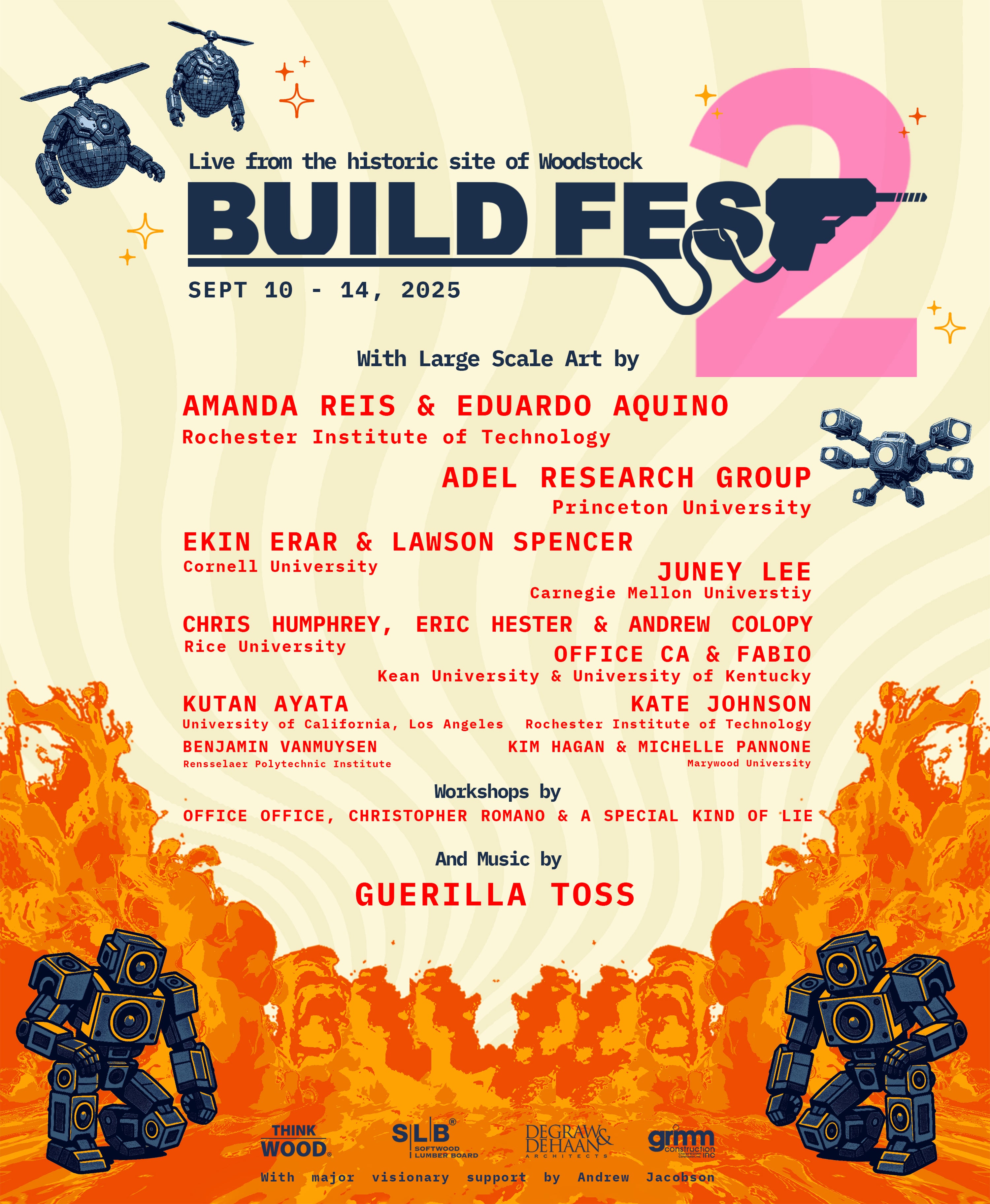
2025 Curatorial Statement: Fire, humanity’s first technology, was delivered to us by Prometheus, stolen from the gods and given as both a gift and a burden. This act bestowed upon us the power to create (to cook food and to keep warm) but also the potential for destruction (to burn down, and destroy). From that mythic moment, we’ve been tasked with the responsibility to wield this power with care.
Today, as we stand on the threshold of new technological revolutions—artificial intelligence, autonomous construction, and beyond—we face a similar dilemma. While these innovations promise efficiency and progress, they also bear with them enormous responsibility. What are the consequences of these tools? Can they, like fire, be used to nurture community, enrich craft, and sustain our planet? Or, rather, will they hasten our demise?
Build Fest 2: Peace Rises looks to explore how emerging technologies can be embraced convivially, in service of human connection and ecological balance. It is an opportunity to question and reimagine a future where technology, like Prometheus’ fire, can be wielded for the collective good, mindful of both its power to spread peace and its potential to harm.
— Neal Lucas Hitch
2025 Proposals
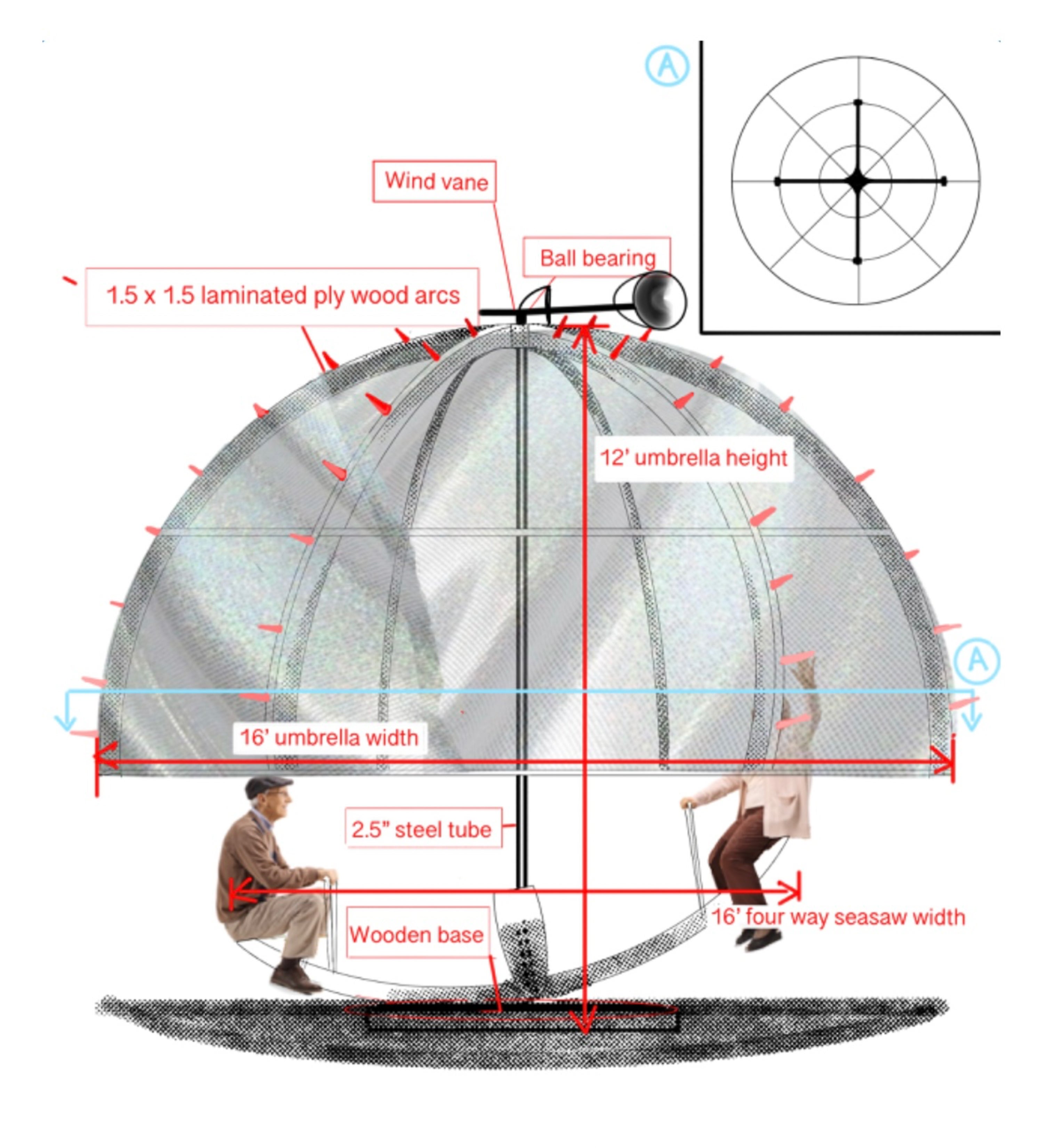
2024 Art & Architecture Festival
This year marked the beginning of a multi-year project to merge digital and analog fabrication pedagogies with creative notions of function and play, focusing on flexibility and adaptation.
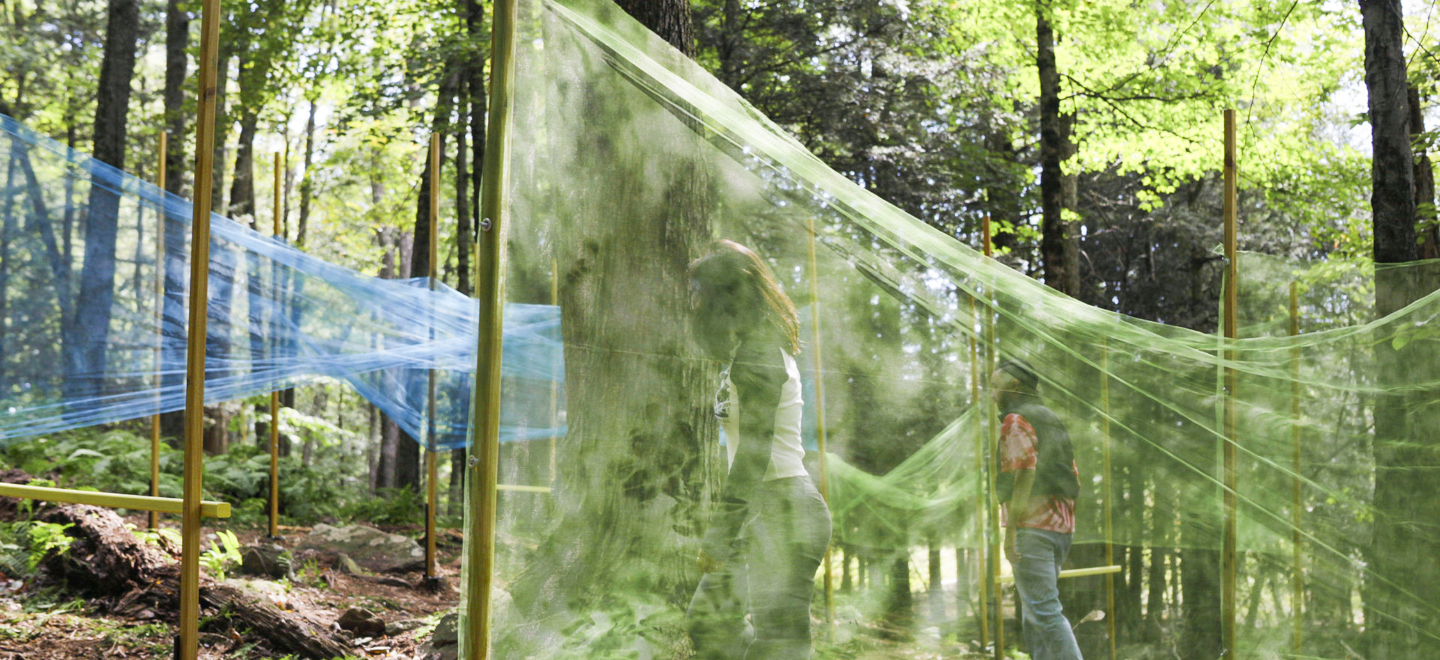
2023 Art & Architecture Festival
Seven works of site-specific architecture were brought to life on the original, recently-uncovered Groovy Way Trail. Installations aligned with concepts of entry, journey, and procession, calling on visitors to forge their own path.
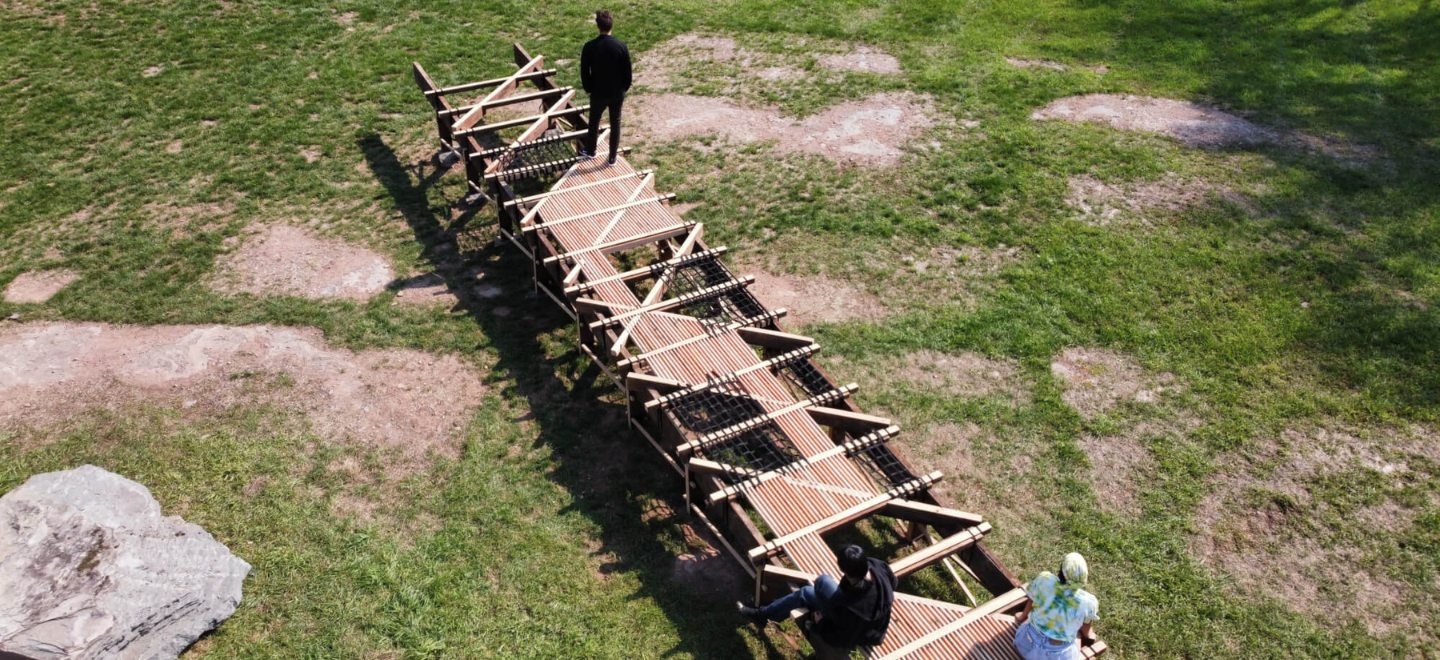
2022 Art & Architecture Festival
Teams were asked to engage with architecture’s ability to affect social and environmental change as functional/aesthetic interventions and as agents toward public engagement.
